 |
 |
Our enthusiastic and extremely knowledgeable perennials team is here to answer your questions and help you choose the best perennials for your situation. There’s always something in bloom for sun, shade, butterflies, birds or deer resistance as well as a variety of bulbs for your space.
Stroll through our time-tested favorites and introduce yourself to the newest varieties. We garden with perennials too; we love them and it shows!
|
43 found, showing page 2 of 3
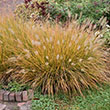
Height: 28 inches
Spread: 24 inches
Sunlight: full sun
Hardiness Zone: 4b
Description:
A fine textured dwarf fountain grass suitable for smaller areas; bright green foliage changes to a golden tan in fall; blooms are large bottle brush like plumes of white that persist until winter; beautiful as an accent or massed in borders or rock garden
Ornamental Features:
Hameln Dwarf Fountain Grass has masses of beautiful plumes of white flowers rising above the foliage in mid summer, which are most effective when planted in groupings. Its grassy leaves are green in color. As an added bonus, the foliage turns a gorgeous coppery-bronze in the fall.
Landscape Attributes:
Hameln Dwarf Fountain Grass is an herbaceous perennial grass with a shapely form and gracefully arching stems. It brings an extremely fine and delicate texture to the garden composition and should be used to full effect.
This is a relatively low maintenance plant, and is best cleaned up in early spring before it resumes active growth for the season. Deer don't particularly care for this plant and will usually leave it alone in favor of tastier treats. It has no significant negative characteristics.
Hameln Dwarf Fountain Grass is recommended for the following landscape applications:
- Accent
- Mass Planting
- Rock/Alpine Gardens
- General Garden Use
- Container Planting
Planting & Growing:
Hameln Dwarf Fountain Grass will grow to be about 24 inches tall at maturity, with a spread of 24 inches. It grows at a medium rate, and under ideal conditions can be expected to live for approximately 10 years. As an herbaceous perennial, this plant will usually die back to the crown each winter, and will regrow from the base each spring. Be careful not to disturb the crown in late winter when it may not be readily seen!
This plant should only be grown in full sunlight. It is very adaptable to both dry and moist growing conditions, but will not tolerate any standing water. It is considered to be drought-tolerant, and thus makes an ideal choice for a low-water garden or xeriscape application. It is not particular as to soil type or pH. It is somewhat tolerant of urban pollution. This is a selected variety of a species not originally from North America.
Hameln Dwarf Fountain Grass is a fine choice for the garden, but it is also a good selection for planting in outdoor pots and containers. It can be used either as 'filler' or as a 'thriller' in the 'spiller-thriller-filler' container combination, depending on the height and form of the other plants used in the container planting. It is even sizeable enough that it can be grown alone in a suitable container. Note that when growing plants in outdoor containers and baskets, they may require more frequent waterings than they would in the yard or garden.
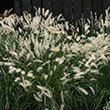
Excellent fall color. Versatile with a graceful fountain-like form. White bloom. USDA 5-9
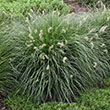
White blooms. Dwarf. Compact. Clumping green foliage. USDA 5-9

Height: 5 feet
Spread: 3 feet
Sunlight: full sun partial shade
Hardiness Zone: 2b
Ornamental Features:
Switch Grass features airy plumes of rose flowers rising above the foliage in mid summer. The brick red seed heads are carried on showy plumes displayed in abundance from late summer to mid fall. Its grassy leaves are green in color. The foliage often turns yellow in fall.
Landscape Attributes:
Switch Grass is an herbaceous perennial grass with an upright spreading habit of growth. Its relatively fine texture sets it apart from other garden plants with less refined foliage.
This is a relatively low maintenance plant, and is best cut back to the ground in late winter before active growth resumes. It has no significant negative characteristics.
Switch Grass is recommended for the following landscape applications:
- Accent
- Mass Planting
- General Garden Use
Planting & Growing:
Switch Grass will grow to be about 4 feet tall at maturity, with a spread of 3 feet. It tends to be leggy, with a typical clearance of 1 foot from the ground, and should be underplanted with lower-growing perennials. It grows at a medium rate, and under ideal conditions can be expected to live for approximately 15 years. As an herbaceous perennial, this plant will usually die back to the crown each winter, and will regrow from the base each spring. Be careful not to disturb the crown in late winter when it may not be readily seen!
This plant does best in full sun to partial shade. It is very adaptable to both dry and moist locations, and should do just fine under typical garden conditions. It is considered to be drought-tolerant, and thus makes an ideal choice for a low-water garden or xeriscape application. It is not particular as to soil type, but has a definite preference for alkaline soils, and is able to handle environmental salt. It is somewhat tolerant of urban pollution. This species is native to parts of North America. It can be propagated by division.
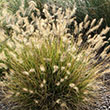
White blooms. Graceful, spreading clump. Deep green leaves. Tolerates black walnut, Dry & wet soils. USDA 5-9
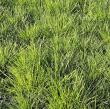
Rich-green fronds have a dense, upright growth habit. White, puffy plumes in late summer. USDA 4-9
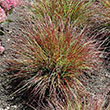
Bright red accent on blades. Compact. Tan seed heads. USDA 5-9
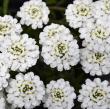
White blooms. Uniform mounding evergreen groundcover. USDA 4-8
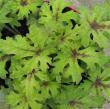
Deeply-lobed, green foliage is accented with dark-purple streaks. White flowers in spring. USDA 4-9
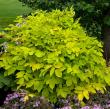
Golden foliage with white blooms and purple berries in fall. Naturalizing. USDA 4-8
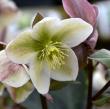
Height: 15 inches
Spacing: 14 inches
Sunlight: partial shade full shade
Hardiness Zone: 4a
Other Names: Lenten Rose, Winter Rose
Description:
Large dangling buttercup-type flowers of ivory streaked with rose and chartreuse emerge in late winter and spring, one of the first flowers to come up in cool weather and what a beautiful harbinger they are; great in woodland gardens and on shaded slopes
Ornamental Features:
Ivory Prince Hellebore features showy nodding white cup-shaped flowers with chartreuse overtones and rose streaks at the ends of the stems from late winter to early spring. Its glossy oval compound leaves remain bluish-green in color throughout the year.
Landscape Attributes:
Ivory Prince Hellebore is an herbaceous evergreen perennial with an upright spreading habit of growth. Its medium texture blends into the garden, but can always be balanced by a couple of finer or coarser plants for an effective composition.
This is a relatively low maintenance plant, and should be cut back in late fall in preparation for winter. Deer don't particularly care for this plant and will usually leave it alone in favor of tastier treats. It has no significant negative characteristics.
Ivory Prince Hellebore is recommended for the following landscape applications:
- Mass Planting
- Rock/Alpine Gardens
- Border Edging
- General Garden Use
- Naturalizing And Woodland Gardens
Planting & Growing:
Ivory Prince Hellebore will grow to be about 12 inches tall at maturity, with a spread of 18 inches. When grown in masses or used as a bedding plant, individual plants should be spaced approximately 14 inches apart. Its foliage tends to remain dense right to the ground, not requiring facer plants in front. It grows at a medium rate, and under ideal conditions can be expected to live for approximately 5 years. As an evegreen perennial, this plant will typically keep its form and foliage year-round.
This plant does best in partial shade to shade. It does best in average to evenly moist conditions, but will not tolerate standing water. It is not particular as to soil pH, but grows best in rich soils. It is somewhat tolerant of urban pollution, and will benefit from being planted in a relatively sheltered location. This particular variety is an interspecific hybrid, and parts of it are known to be toxic to humans and animals, so care should be exercised in planting it around children and pets. It can be propagated by division; however, as a cultivated variety, be aware that it may be subject to certain restrictions or prohibitions on propagation.

Ivory rose outward facing blooms. Glossy foliage. USDA 5-8
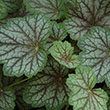
Vibrant, blue-green foliage has deep, purple veins. White flowers. USDA 4-8
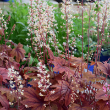
Height: 26 inches
Spacing: 24 inches
Sunlight: partial shade, full shade
Hardiness Zone: 4a
Description:
A vigorous shade plant with dainty flowers and stunning foliage; beautiful orange leaves with prominent burgundy centers and veins; an excellent color accent for the garden or containers
Ornamental Features:
Sweet Tea Foamy Bells is primarily valued in the garden for its distinctive form, with the flower stalks towering over the foliage. It features dainty spikes of creamy white bell-shaped flowers rising above the foliage from mid spring to early summer. The flowers are excellent for cutting. Its attractive deeply cut lobed leaves remain coppery-bronze in color with distinctive burgundy veins throughout the year. The black stems can be quite attractive.
Landscape Attributes:
Sweet Tea Foamy Bells is a dense herbaceous evergreen perennial with tall flower stalks held atop a low mound of foliage. Its relatively fine texture sets it apart from other garden plants with less refined foliage.
This is a relatively low maintenance plant, and should be cut back in late fall in preparation for winter. It is a good choice for attracting hummingbirds to your yard. It has no significant negative characteristics.
Sweet Tea Foamy Bells is recommended for the following landscape applications:
- Mass Planting
- Rock/Alpine Gardens
- Border Edging
- General Garden Use
- Groundcover
- Container Planting
- Planting & Growing
Sweet Tea Foamy Bells will grow to be about 20 inches tall at maturity, with a spread of 28 inches. When grown in masses or used as a bedding plant, individual plants should be spaced approximately 24 inches apart. Its foliage tends to remain dense right to the ground, not requiring facer plants in front. It grows at a medium rate, and under ideal conditions can be expected to live for approximately 10 years. As an evegreen perennial, this plant will typically keep its form and foliage year-round.
This plant does best in partial shade to shade. It prefers to grow in average to moist conditions, and shouldn't be allowed to dry out. It is not particular as to soil type or pH. It is somewhat tolerant of urban pollution. Consider applying a thick mulch around the root zone in winter to protect it in exposed locations or colder microclimates. This particular variety is an interspecific hybrid. It can be propagated by division; however, as a cultivated variety, be aware that it may be subject to certain restrictions or prohibitions on propagation.
Sweet Tea Foamy Bells is a fine choice for the garden, but it is also a good selection for planting in outdoor pots and containers. With its upright habit of growth, it is best suited for use as a 'thriller' in the 'spiller-thriller-filler' container combination; plant it near the center of the pot, surrounded by smaller plants and those that spill over the edges. Note that when growing plants in outdoor containers and baskets, they may require more frequent waterings than they would in the yard or garden.

Plant Height: 12 inches
Flower Height: 24 inches
Spacing: 10 inches
Sunlight: full sun, partial shade, full shade
Hardiness Zone: 3b
Other Names: Coralbells, Alumroot
Description:
Low growing mounds of deep purple-bronze foliage offset tiny spikes of creamy white flowers in the early summer months; adds contrast and color to borders, beds, rock and woodland gardens; low maintenance and easy to grow
Ornamental Features:
Palace Purple Coral Bells features dainty spikes of creamy white bell-shaped flowers rising above the foliage from late spring to mid summer. Its attractive crinkled lobed leaves remain deep purple in color with curious burgundy undersides and tinges of dark green throughout the year.
Landscape Attributes:
Palace Purple Coral Bells is a dense herbaceous evergreen perennial with tall flower stalks held atop a low mound of foliage. Its relatively fine texture sets it apart from other garden plants with less refined foliage.
This is a relatively low maintenance plant, and should be cut back in late fall in preparation for winter. It is a good choice for attracting hummingbirds to your yard. It has no significant negative characteristics.
Palace Purple Coral Bells is recommended for the following landscape applications:
- Mass Planting
- Rock/Alpine Gardens
- Border Edging
- General Garden Use
- Groundcover
Container Planting
- Planting & Growing
Palace Purple Coral Bells will grow to be about 12 inches tall at maturity extending to 24 inches tall with the flowers, with a spread of 12 inches. When grown in masses or used as a bedding plant, individual plants should be spaced approximately 10 inches apart. Its foliage tends to remain dense right to the ground, not requiring facer plants in front. It grows at a medium rate, and under ideal conditions can be expected to live for approximately 10 years. As an evegreen perennial, this plant will typically keep its form and foliage year-round.
This plant performs well in both full sun and full shade. However, you may want to keep it away from hot, dry locations that receive direct afternoon sun or which get reflected sunlight, such as against the south side of a white wall. It prefers to grow in average to moist conditions, and shouldn't be allowed to dry out. It is not particular as to soil type or pH. It is somewhat tolerant of urban pollution. Consider applying a thick mulch around the root zone in winter to protect it in exposed locations or colder microclimates. This is a selection of a native North American species. It can be propagated by division; however, as a cultivated variety, be aware that it may be subject to certain restrictions or prohibitions on propagation.
Palace Purple Coral Bells is a fine choice for the garden, but it is also a good selection for planting in outdoor pots and containers. With its upright habit of growth, it is best suited for use as a 'thriller' in the 'spiller-thriller-filler' container combination; plant it near the center of the pot, surrounded by smaller plants and those that spill over the edges. Note that when growing plants in outdoor containers and baskets, they may require more frequent waterings than they would in the yard or garden.
43 found, showing page 2 of 3









